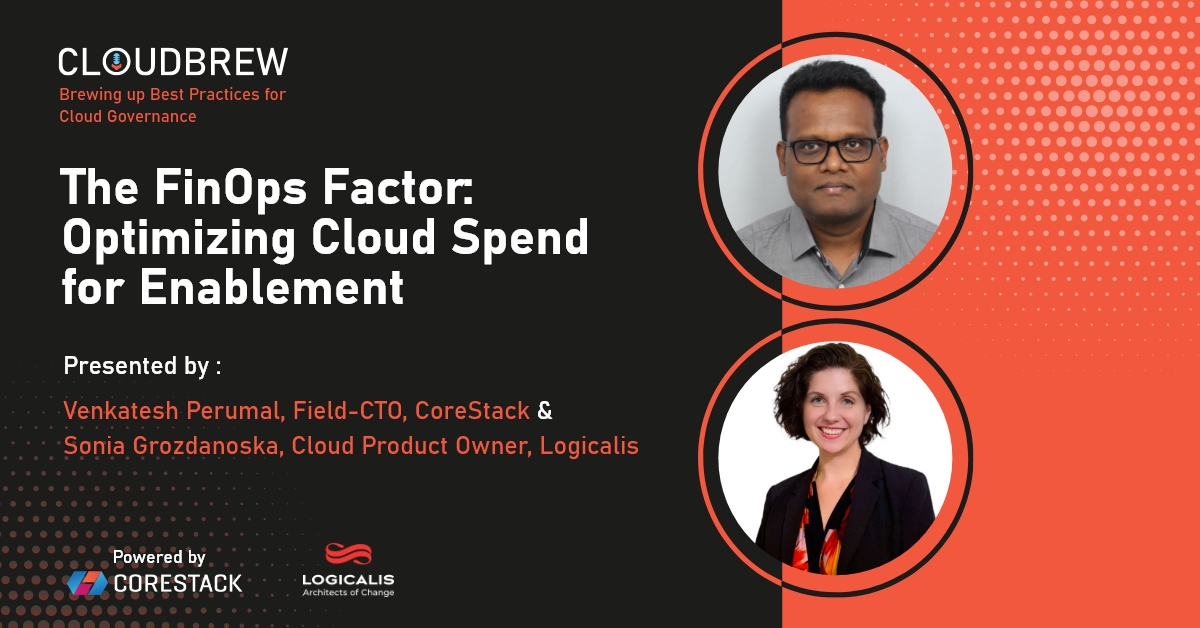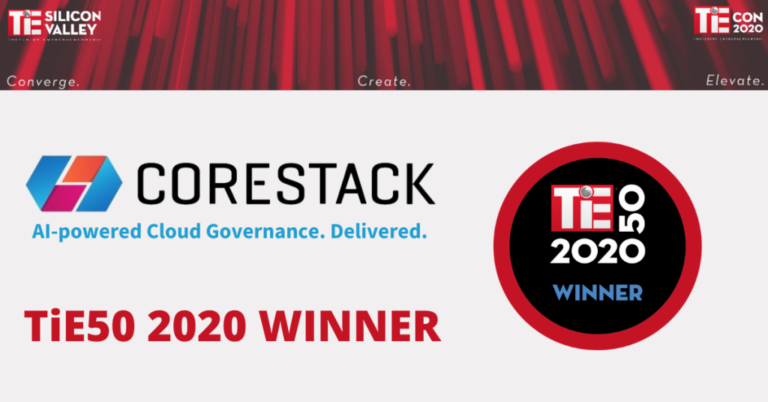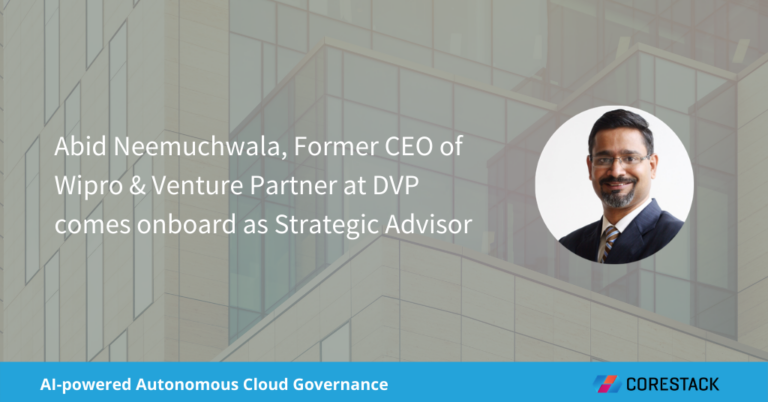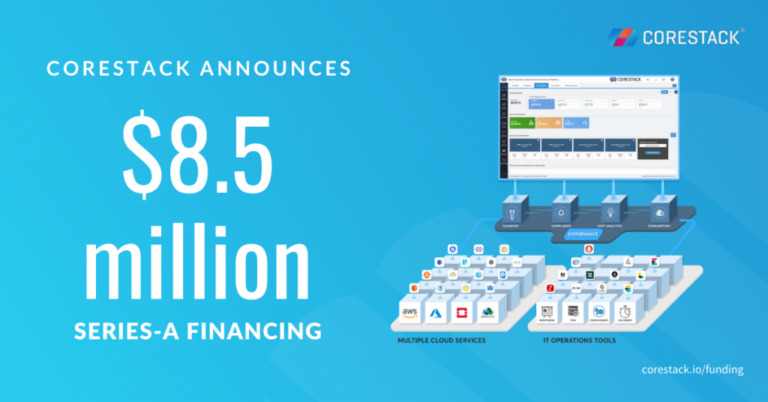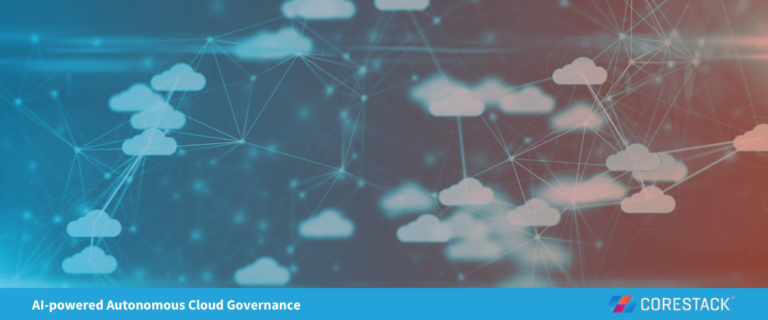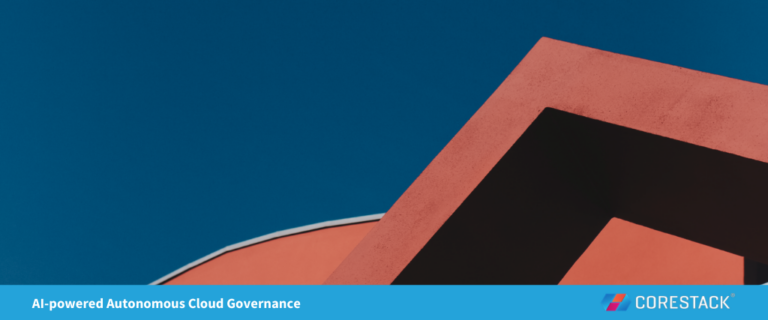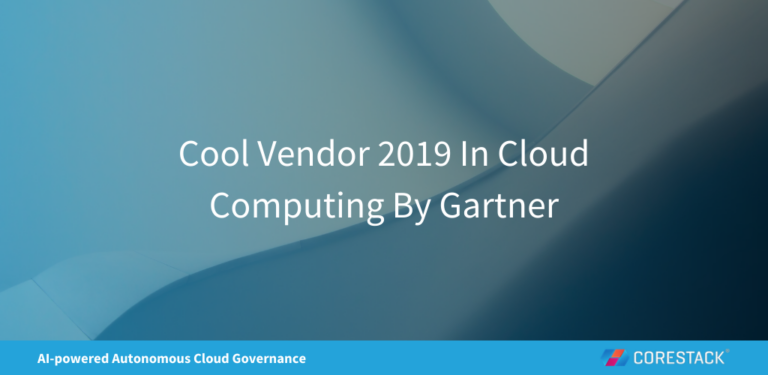The FinOps Factor: Optimizing Cloud Spend for Enablement
In Episode 7 of CloudBrew, Sonia Grozdanoska from Logicalis joins CoreStack to bring a managed services perspective to FinOps.
FinOps is a popular buzzword, for good reason, but we think you deserve examples of real-world implementation and value. For example, according to Logicalis, organizations are wasting up to 35% in their cloud spend. Keep reading to avoid being one of them …
In Episode 7 of CloudBrew, CoreStack's NextGen Cloud Governance podcast, we get a managed services perspective from Sonia Grozdanoska, Cloud Product Owner, Logicalis, and Venkatesh Perumal, Field-CTO, CoreStack. With a focus on authentic, proven FinOps, this episode is all about optimizing cloud spend to drive enablement and future investment.
Driving Value in a Volatile Marketplace
We recognized that cloud tech is growing at a speed no one predicted. We also know there’s a global hesitation to spend amid uncertainty. But when asked about servicing customers from a valued delivery perspective, Ms. Grozdanoska from Logicalis had a judicious response: “In today's economy, there's a lot of pressure to do more with less. We've all heard about the current economic uncertainty that's happening around the globe—the tightening of budgets within our customers. So one of the greatest values we can deliver is helping customers achieve more from the same budgets they've had in previous years.”
Mr. Perumal from CoreStack agrees: “Many customers believe a myth that cloud is just there to save on costs, but it’s also about optimizing them. Doing more and less how can we achieve that optimization. It’s absolutely important for every customer to know this, whether they’re thinking about cloud or are already on it.”
Elevating Managed Services with Tools
“Tools bring transparency and visibility,” shares Grozdanoska. “Analysts are telling us that, on average, customers are wasting up to 35% in their cloud spend. From a managed services perspective, we have the ability to come in and analyze a customer’s infrastructure and understand their key objectives and drivers. We can actually provide value by giving recommendations and suggestions on how to optimize costs, but also look at improving or maintaining performance. It's a fine line because it's not just about saving on the dollar. It's also about making sure that infrastructure and resources are being optimized as much as possible, in order to provide the value that the business needs to achieve their outcomes. Having tooling helps with that conversation, because it provides that level of transparency where you can actually see your consumption costs—you can see what you're utilizing.”
Context, Automation, and Recommendations
“Converting the numbers to context—that's very important,” reports Perumal. “If you don't have context, you won’t be in a position to deliver that value. How do we get that context in a much more automated way? Automation plays a very, very key role. It's not just about showing the numbers and reporting, but equally important is to show recommendations, which is much more contextual in seeing how it’s going to impact the overall business.”
The FinOps Factor
When asked about the real challenges some companies face when it comes to implementing recommendations, Grozdanoska was ready with a solution: “Because we have tools and data to see trends over a period of time, we can identify those anomalies and drill down to make improvements. We then suggest improvements on how to restructure resources into logical groups, enabling greater transparency when viewing consumptions that are in a granular format.”
In terms of tools and cloud governance helping companies to go further and faster in cloud, Grozdanoska sums it up nicely:
“Tools work a lot faster than humans do.”

